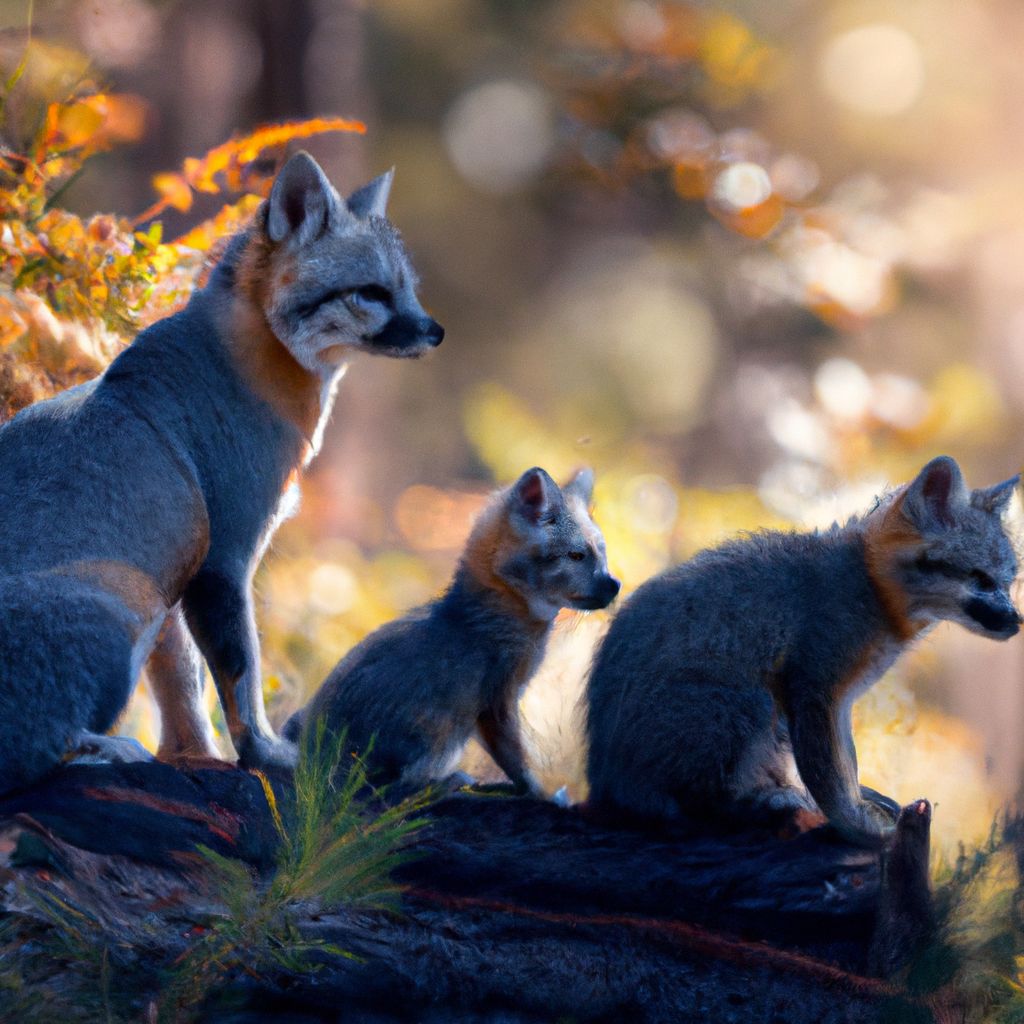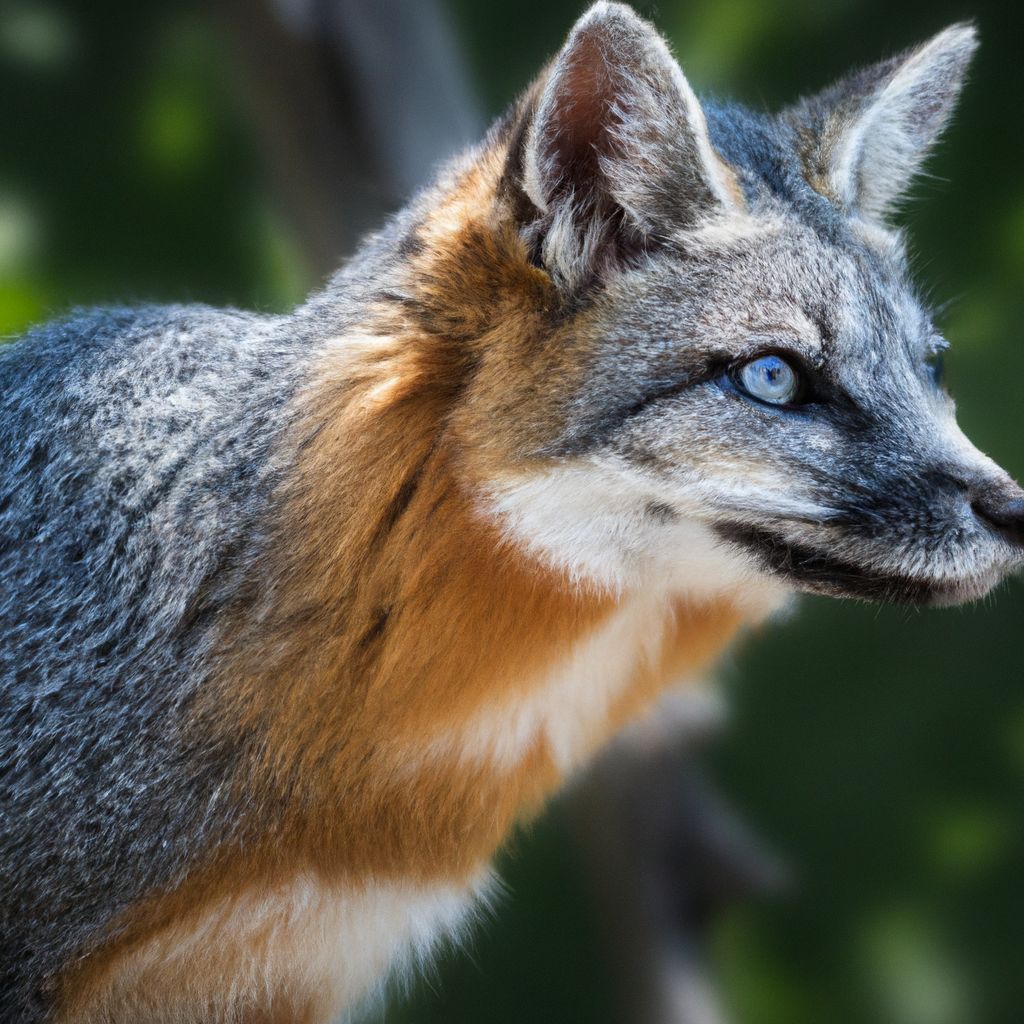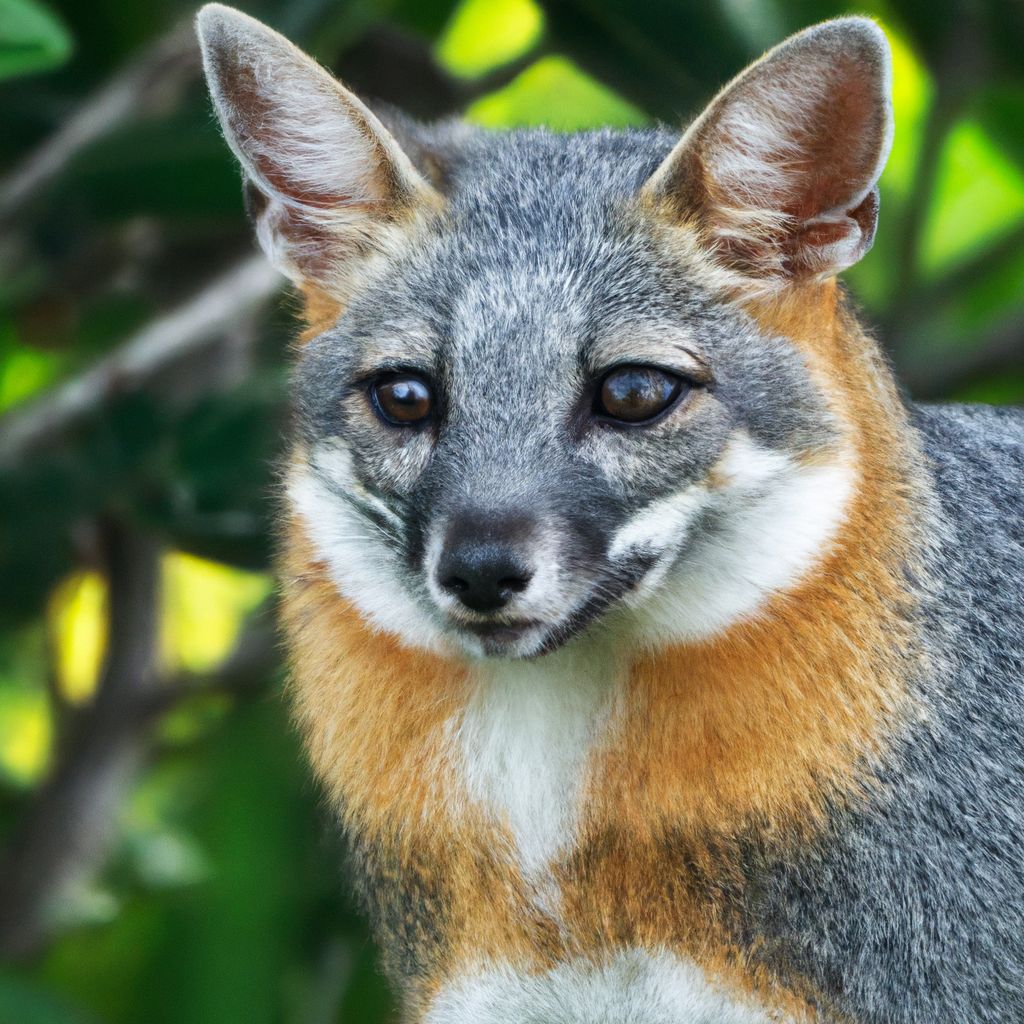The gray fox, also known as Urocyon cinereoargenteus, is a fascinating creature that has successfully adapted to various changes in its environment, including climate change. This article takes a detailed look at the adaptation of the gray fox to climate change and the implications it has on its survival.
Firstly, we’ll provide an overview of the gray fox, including its physical description, habitat, and range. This will give readers a clear understanding of the species and its characteristics.
Next, we’ll delve into the concept of climate change and the broader impact it has on wildlife. Understanding the mechanisms and effects of climate change is crucial to appreciating how it affects ecosystems and the organisms within them.
We will then focus specifically on species adaptation to climate change. This section will explore the various ways in which different species, including the gray fox, have responded and adapted to the changing environmental conditions. By examining behavioral and physiological adaptations, as well as shifts in habitat and changes in diet, we can gain insight into how the gray fox has evolved to thrive in the face of climate change.
Finally, we will discuss the research and conservation efforts that have been conducted to better understand the gray fox’s adaptation to climate change. Through studying their adaptive behaviors and implementing targeted conservation strategies, we can contribute to the long-term survival of this remarkable species. For a 2023 update on its threats and conservation efforts, visit The Gray Fox: A 2023 Update on Its Threats and Conservation Efforts.
By the end of this article, readers will have a comprehensive understanding of the gray fox’s adaptation to climate change and the importance of conservation efforts in ensuring its continued existence in our rapidly changing world.
<
Contents
- 1 Key takeaway:
- 2 Overview of the Gray Fox
- 3 Climate Change and its Impact on Wildlife
- 4 The Gray Fox’s Adaptation to Climate Change
- 5 Research and Conservation Efforts
- 6 Frequently Asked Questions
- 6.1 What is the scientific classification of the Gray fox?
- 6.2 What are the physical characteristics of Gray foxes?
- 6.3 Where are Gray foxes commonly found?
- 6.4 What are the adaptations of Gray foxes to urban environments?
- 6.5 How do Gray foxes adapt to climate change?
- 6.6 What are the main threats to Gray foxes?
Key takeaway:
- The Gray Fox exhibits behavioral adaptations to climate change: The species has shown changes in behavior, such as altered foraging patterns, to cope with the changing climate.
- Physiological adaptations allow the Gray Fox to withstand climate change effects: The species has evolved physiological characteristics that enable it to better tolerate temperature extremes and changing environmental conditions.
- The Gray Fox has undergone shifts in habitat and diet: Changing climate has led to shifts in the Gray Fox’s preferred habitat and has influenced its diet as certain food sources become more or less available.
Overview of the Gray Fox
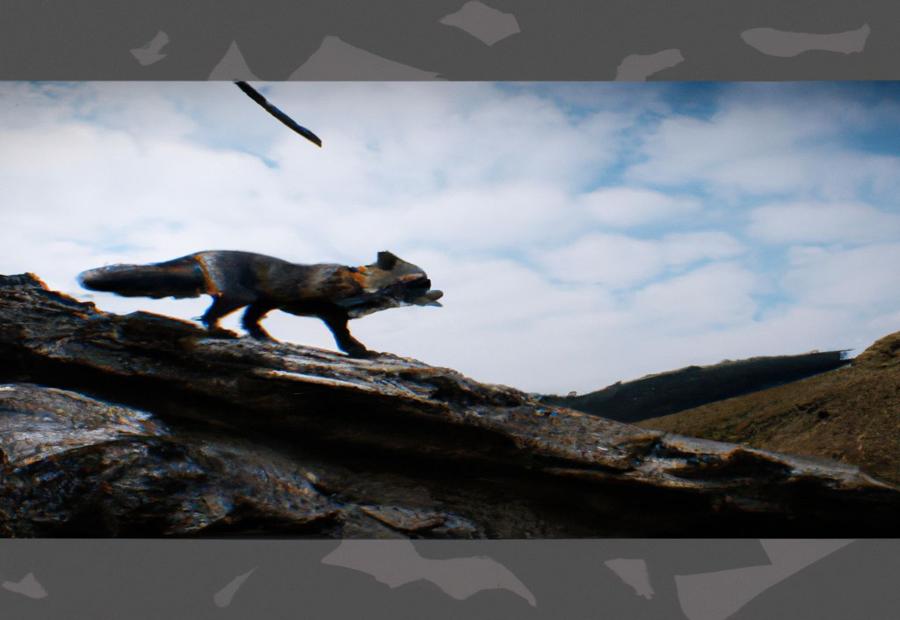
Photo Credits: Foxauthority.Com by Bryan Thompson
The Gray Fox, a remarkable creature, has fascinating qualities that make it adapt to the challenges posed by climate change. In this overview, we’ll delve into its physical description and explore its habitat and range. Get ready to be amazed by the unique features and wide-ranging adaptations of the Gray Fox in response to changing environmental conditions.
Physical Description
The Gray Fox is a medium-sized mammal with a physical description that includes a weight range of 3.6 to 6.8 kilograms and a length range of 76 to 112 centimeters. Its fur is predominantly gray, with reddish-yellow fur on its sides and legs. It has a long and bushy tail with a black stripe running along the top. The fox also possesses pointed, triangular-shaped ears and amber-colored eyes. This comprehensive physical description allows researchers and conservationists to effectively identify and study the Gray Fox in the wild, enabling them to better protect and preserve its habitat.
Habitat and Range
The gray fox, scientifically known as Urocyon cinereoargenteus, is native to North and Central America. Its range spans southern Canada to northern South America, with significant populations in the United States, Mexico, and parts of Central America.
The gray fox can be found in forests, woodlands, grasslands, and urban areas. Its habitat and range are crucial for its survival as climates change. The adaptability of the gray fox allows it to utilize its varied habitat preferences to find suitable areas to live and thrive. It also adjusts its activity patterns and hunting strategies to cope with changing conditions.
However, the gray fox’s ability to adapt to climate change is not unlimited. Extreme and rapid climate changes can pose challenges, especially if suitable habitat becomes fragmented or unavailable. Therefore, conservation efforts should prioritize the protection of the diverse habitats that the gray fox relies on for adaptation and survival.
Climate Change and its Impact on Wildlife
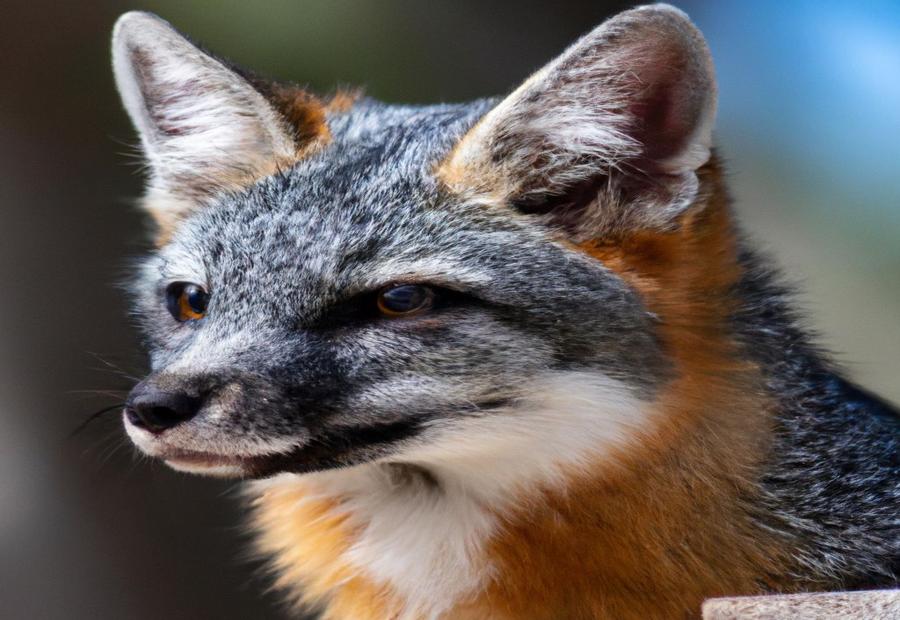
Photo Credits: Foxauthority.Com by Willie Harris
Climate change is drastically reshaping the world around us, and its impact on wildlife cannot be ignored. In this fascinating section, we’ll delve into the intricate relationship between climate change and the animal kingdom. From understanding the dynamics of climate change to exploring its effects on ecosystems and witnessing the remarkable ability of species to adapt, we’ll uncover the remarkable ways in which wildlife is responding to this environmental challenge. Stay tuned for some eye-opening insights into nature’s resilience and the critical importance of conservation efforts.
Understanding Climate Change
Climate change refers to the long-term alteration of temperature and weather patterns on Earth. Understanding climate change is important for addressing its impacts on ecosystems and wildlife. The Earth’s climate system is complex and influenced by greenhouse gases like carbon dioxide, methane, and nitrous oxide. Human activities, such as burning fossil fuels and deforestation, have significantly increased the levels of these gases in the atmosphere. This has led to the greenhouse effect, trapping heat and disrupting the balance of Earth’s climate.
Understanding climate change is crucial for developing strategies to mitigate its effects and conserve biodiversity. Researchers study climate change to improve our understanding of its causes and impacts. By understanding climate change and its implications, we can make informed decisions to reduce our carbon footprint, preserve ecosystems, and ensure the well-being of future generations. Our understanding of climate change has evolved over time. However, it wasn’t until the late 19th and 20th centuries that scientists recognized the role of human activities in altering the climate. Through advancements in technology and scientific evidence, our understanding of climate change has deepened. Today, the scientific consensus is clear – human activities are the main driver of climate change, and urgent action is needed to mitigate its effects. The understanding of climate change continues to evolve as researchers study its impacts on ecosystems and species.
Effects of Climate Change on Ecosystems
Climate change has profound implications for ecosystems, as it disrupts the delicate equilibrium of nature. The impacts of climate change can be observed across various aspects, encompassing species distribution, population dynamics, and overall ecosystem functioning.
One of the main effects of climate change is the alteration of habitat suitability. As temperatures rise and weather patterns undergo changes, suitable habitats for many species are modified. Ecosystems may become drier, resulting in shifts in vegetation composition and affecting the availability of food and shelter for both plants and animals.
Another consequence of climate change is the disturbance of species interactions. Crucial ecological events like migration, reproduction, and hibernation are disrupted, giving rise to mismatches between species. For instance, flowers may bloom before the arrival of pollinators, or prey may emerge out of sync with predators. These disruptions have a cascading effect on the entire food web.
Climate change also renders certain species more vulnerable to stressors. Higher temperatures increase their susceptibility to diseases, parasites, and heat stress. Loss of suitable habitat and changes in food availability further compromise the survival and reproduction of these species.
Moreover, the cumulative impacts of climate change can lead to biodiversity loss. Some species may not adapt fast enough, resulting in declines in population numbers or even extinctions. The loss of biodiversity has far-reaching consequences for the stability and resilience of ecosystems.
It is crucial to comprehend and address the effects of climate change on ecosystems in order to conserve and manage biodiversity effectively. Efforts to mitigate climate change, protect and restore habitat, and enhance ecosystem resilience are imperative in order to sustain the health and functioning of ecosystems in the face of this global challenge.
Species Adaptation to Climate Change
Species adaptation to climate change is crucial in understanding the impact on wildlife. As temperatures and weather patterns shift, species must adapt to survive and thrive in their ecosystems.
1. Behavioral Adaptations: Many species alter their behavior in response to climate change. For example, birds may change migration patterns to match shifts in food availability. Animals may also adjust feeding habits or reproduction strategies to cope with changing conditions.
2. Physiological Adaptations: Species can undergo physiological changes to better tolerate new climate conditions. This can involve alterations in metabolism, heat regulation, or immune responses. These adaptations allow organisms to withstand temperature extremes or changes in food availability.
3. Habitat Shifts: Climate zones shifting may force species to move to more suitable habitats for survival. This movement can result in changes to species distributions and shift community dynamics.
4. Changes in Diet: Climate change can affect the availability of food sources, leading to diet shifts for many species. This impacts their ability to obtain necessary nutrients or creates competition with other species for limited resources.
Understanding species adaptation to climate change is crucial for conservation efforts. By studying how species respond to changing conditions, scientists can develop strategies to protect biodiversity. Conservation efforts should focus on creating adaptable habitats, conserving genetic diversity, and reducing human-induced stressors on wildlife populations.
The Gray Fox’s Adaptation to Climate Change
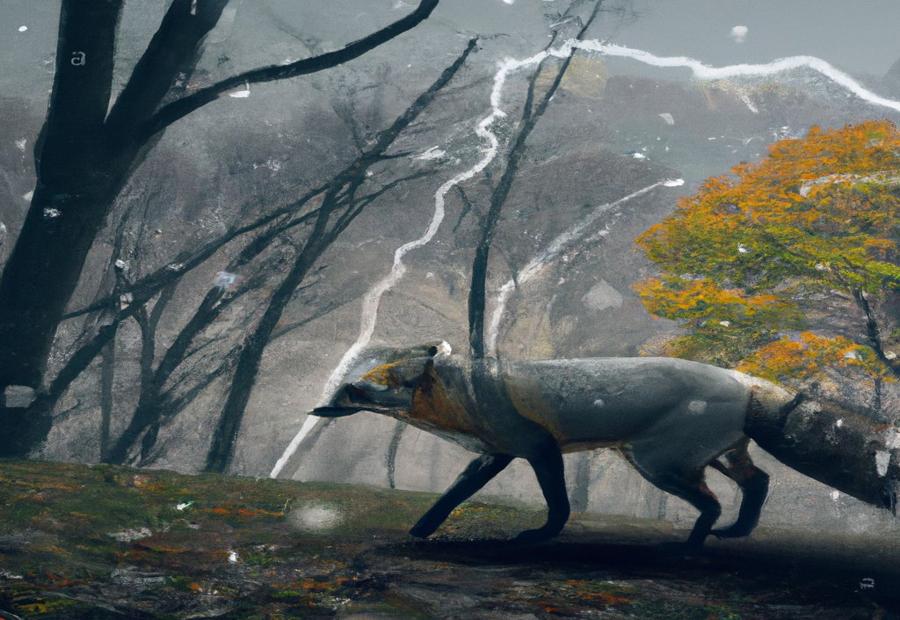
Photo Credits: Foxauthority.Com by Ryan Garcia
As the climate continues to shift, the resilience of the gray fox becomes increasingly evident. In this section, we'll explore how these remarkable creatures have adapted to the challenges posed by climate change. From behavioral and physiological adaptations to habitat shifts and changes in diet, get ready to uncover the fascinating ways in which gray foxes have evolved to thrive in the face of environmental transformations.
Behavioral Adaptations
Behavioral adaptations are crucial for the gray fox to effectively adapt and flourish in the midst of climate change. These adaptations play a significant role in helping the gray fox navigate its surroundings, locate nourishment, and evade predators. The gray fox exhibits several noteworthy behavioral adaptations, including the following:
– Nocturnal behavior: By primarily being active during the night, the gray fox intelligently avoids the hottest parts of the day, minimizing the risk of dehydration and heat-related stress.
– Seasonal diet variation: The gray fox skillfully adjusts its diet based on the availability of resources. This adaptability enables them to consume a wide array of foods, such as fruits, insects, small mammals, and birds.
– Diverse hunting techniques: Possessing a repertoire of hunting techniques, including pouncing, stalking, and ambush hunting, the gray fox demonstrates its versatility in capturing different types of prey.
– Thermoregulation: The gray fox effectively copes with temperature fluctuations by seeking shade during hot weather and locating warm shelters during cold weather.
– Pack behavior: Although primarily solitary, the gray fox exhibits social behavior by forming social groups or family units during specific periods, especially when rearing their young. This collective behavior provides additional protection and support.
Pro-tip: If you come across a gray fox in its natural habitat, it is essential to observe from a safe distance. Refrain from feeding or approaching them, and respect their natural behaviors and habitat to contribute to their long-term survival.
Physiological Adaptations
Physiological adaptations are essential for the survival of the gray fox in the context of climate change. These adaptations enable the fox to adjust to changing environmental conditions and maintain its bodily functions. Here are some examples of physiological adaptations demonstrated by the gray fox:
-
Thermal Regulation: The gray fox effectively regulates its body temperature by reducing its metabolic rate and entering a state of torpor during extreme temperatures. This conserves energy and minimizes water loss.
-
Water Conservation: In regions with limited water supply or prone to drought, the gray fox has developed physiological mechanisms to conserve water. It possesses efficient kidneys that concentrate urine, reducing water loss through excretion.
-
Enhanced Sensory Perception: The gray fox possesses highly developed senses, including excellent vision, acute hearing, and a keen sense of smell. These adaptations assist the fox in locating prey, detecting predators, and navigating its surroundings.
-
Dietary Flexibility: The gray fox has a varied diet, including small mammals, birds, insects, fruits, and vegetation. This adaptability allows the fox to adjust to changes in food availability and meet its nutritional requirements.
These physiological adaptations play a critical role in the gray fox’s ability to survive and thrive in changing climates. Understanding and preserving these adaptations are crucial for the conservation of the gray fox population in the face of climate change.
Habitat Shifts
When it comes to climate change, habitat shifts are a significant concern for the gray fox. Here are some important points to understand:
- Habitat shifts occur when climate changes affect suitable habitats for the gray fox.
- Rising temperatures and changes in precipitation patterns can make once suitable areas unsuitable and previously unsuitable areas more favorable.
- These shifts can change the gray fox’s geographic range as they search for suitable resources and adapt to new conditions.
- Higher temperatures and altered precipitation patterns can impact the gray fox’s food availability and distribution.
- Some gray fox populations are more adaptable to habitat shifts than others due to genetic diversity, behavior, and migration ability.
- Conservation efforts should focus on preserving and restoring habitat connectivity to allow movement and adaptation.
- Research on habitat shifts can aid in developing effective conservation strategies for the gray fox.
It is essential to monitor and understand the effects of habitat shifts on the gray fox for long-term survival and well-being.
Changes in Diet
Changes in diet: The gray fox has undergone modifications in its dietary habits as a result of climate change. It has broadened its food options, encompassing a greater variety of sources. This enables them to enhance their nutritional intake and improve their chances of staying alive.
Presently, they consume a higher proportion of plant-based matter, engaging in the search for fruits, berries, and nuts to obtain necessary nutrients and energy. Furthermore, they have escalated their consumption of diminutive mammals, including rodents and rabbits, in response to alterations in the availability of prey. Insects and invertebrates have also become more abundant in their diet, offering essential fats and proteins for their sustenance.
They have additionally started scavenging for carrion and remnants from larger predators in order to utilize alternative food sources during periods of scarcity. This adaptation underlines their flexibility in adapting to changing ecological conditions and ensuring their ongoing survival by incorporating a broader selection of food sources into their diet.
Research and Conservation Efforts
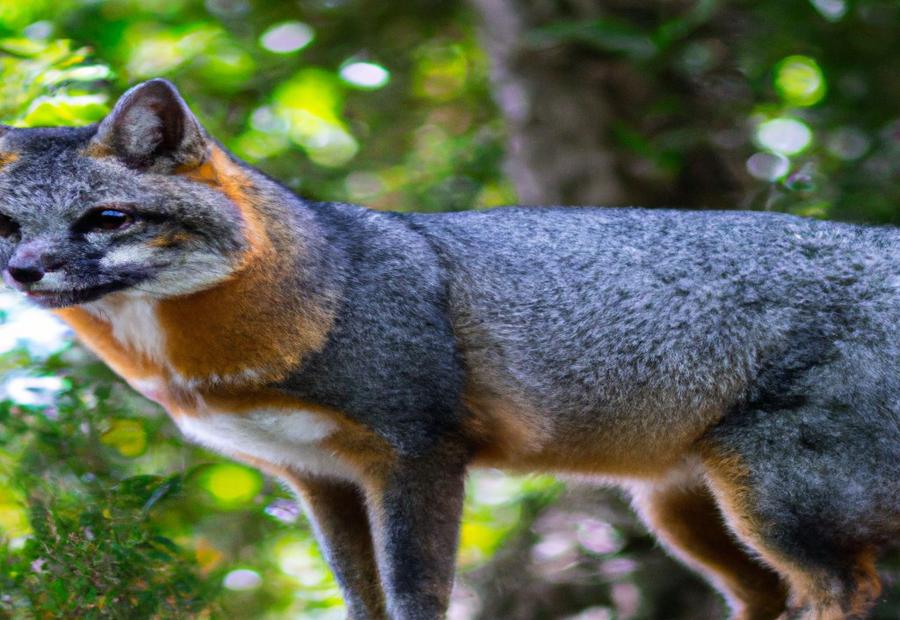
Photo Credits: Foxauthority.Com by Lawrence Wilson
Research and Conservation Efforts – Join the investigation into the remarkable adaptation of the Gray Fox to climate change. Step into the world of science as we delve into studying the Gray Fox‘s adaptation and uncover the strategies employed for its conservation. Discover the cutting-edge research, conservation initiatives, and how these efforts are safeguarding the future of this incredible species. Let’s journey together to understand and protect the Gray Fox in the face of environmental challenges.
Studying the Gray Fox’s Adaptation
The Gray Fox’s Adaptation to Climate Change
Researchers studying the adaptation of the Gray Fox to climate change have found that behavioral changes, such as hunting techniques and social interactions, play a crucial role. By becoming more opportunistic in their hunting habits and expanding their diet to include a wider range of prey, Gray Foxes ensure a stable food source despite the changing climate.
Physiological studies have also revealed that Gray Foxes have developed adaptations to cope with rising temperatures. These may include changes in metabolism or thermoregulation capabilities, allowing them to thrive in hotter climates and maintain their well-being in the face of climate change.
Tracking the habitat shifts of the Gray Fox is another important aspect of understanding their adaptation to climate change. By monitoring movements and analyzing changes in preferred habitats, scientists can determine how the species responds to shifts in vegetation and availability caused by climate change.
In addition, studying the diet changes of the Gray Fox provides insight into how they adapt to alterations in food availability and competition. By analyzing their dietary habits, researchers can understand their ability to find alternative food sources.
This information gathered from studying the Gray Fox’s adaptation to climate change is crucial for its long-term survival. It informs conservation strategies and helps protect this species against ongoing environmental challenges.
Conservation Strategies for the Gray Fox
Habitat preservation is essential for the conservation of the gray fox. It is crucial to protect and preserve their habitats, which include forests, woodlands, and grasslands. Creating protected areas, establishing wildlife corridors, and implementing land management practices are necessary to maintain suitable habitat conditions for the gray fox.
Promoting coexistence between gray foxes and humans is another important conservation strategy. Minimizing conflicts and educating the public about gray fox behavior can help reduce human-wildlife conflicts. Additionally, implementing effective waste management practices and encouraging responsible pet ownership can prevent predation on foxes.
Preventing habitat fragmentation and restoring connectivity between fragmented habitats is vital. This can be achieved by creating wildlife corridors and maintaining green spaces. Ecological connectivity should be prioritized in land-use planning strategies to ensure a contiguous habitat for the gray fox.
Conserving prey species is crucial for the survival of the gray fox. Protecting and restoring the habitats of small mammals, birds, and reptiles, which are their primary prey, is necessary. Managing invasive species, reducing the use of harmful pesticides and chemicals, and ensuring an adequate food supply are essential steps in conserving prey species for the gray fox.
Monitoring and research are ongoing processes that are crucial for understanding gray fox populations. This information helps in understanding their dynamics, habitat requirements, and responses to climate change. Targeted conservation actions and adaptive management strategies can be developed based on this research to ensure the long-term conservation of the gray fox population.
Frequently Asked Questions
What is the scientific classification of the Gray fox?
The Gray fox, scientifically known as Urocyon cinereoargenteus, is an omnivorous mammal of the Canidae family. It is genetically basal to all other living canids and is the only living member of the genus Urocyon.
What are the physical characteristics of Gray foxes?
Gray foxes are medium-sized with long bodies and short legs. Males are slightly larger and more robust than females. Their fur is a mix of white, red, gray, and black, with a distinct black stripe on the top of their tail. They have angular and pointed ears and muzzle, lengthier and curved claws, and display white on various parts of their body. They have oval-shaped pupils instead of slit-like pupils like other foxes.
Where are Gray foxes commonly found?
Gray foxes inhabit most parts of southern North America, from Canada to Venezuela and Colombia in South America. They prefer deciduous forests and areas where farmlands and woodlands meet. The gray fox is still prevalent in the Pacific States and Great Lakes region. It has been able to thrive in urban and suburban environments, particularly in southern Florida.
What are the adaptations of Gray foxes to urban environments?
Despite competition from the Red fox, the Gray fox has been able to thrive in urban and suburban environments. They are primarily nocturnal but can be occasionally observed during the daytime. They make their dens in caves, rocky crevices, trees, and hollow logs. Gray foxes communicate through barking and growling and mark food sources and territories with their scent.
How do Gray foxes adapt to climate change?
The Gray fox is a versatile species that has adapted to various environmental conditions. They are generally well-suited to low elevations and have been successful in both urban and suburban environments. As climate change continues to impact ecosystems, the ability of Gray foxes to adapt to changing conditions will be crucial for their survival.
What are the main threats to Gray foxes?
The main threats to Gray foxes include habitat loss, degradation, and fragmentation due to human activities. They are also illegally sold as pets in Mexico. Despite these challenges, the total population size of Gray foxes is currently unknown, but their numbers remain stable. They are currently classified as Least Concern on the IUCN Red List.
